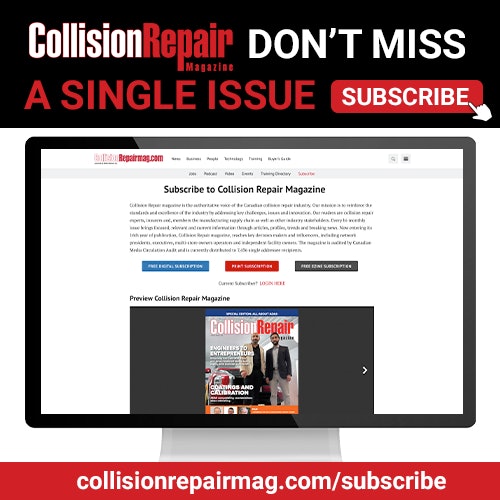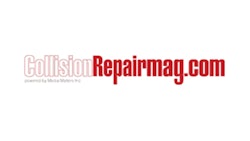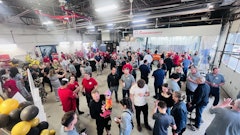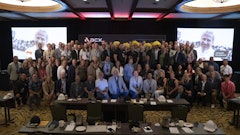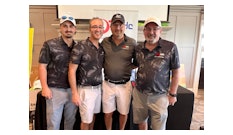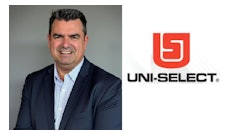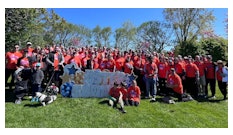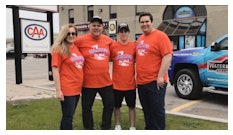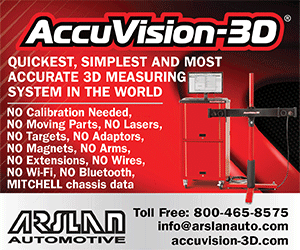
An open letter to insurance companies
Column by TOM BISSONNETTE
It’s hard to believe that I have been involved with the collision repair business since 1982! I have seen my fair share of change and challenges: the advent of the unibody vehicle, plastic bumpers, two stage paint products, water borne paints, new metals, composite materials, air bags, ADAS, environmental issues, I-CAR Training, workplace safety, OEM repair procedures, a pandemic, supply chain issues and a major case of margin compression.
What is margin compression?
Essentially it boils down to an increase in the cost of doing business without a revenue adjustment to compensate for those increases. It is real and it’s happening bigtime now! It used to be that a good body technician could generate between 200 hours and 300 hours a month if they were well trained and organized. Today that same tech is struggling to make their actual time each month. Due to the increasing complexity of today’s vehicles, they can no longer just repair the vehicle the same way as every other vehicle. Each manufacturer has very specific OEM repair procedures so to do a safe and quality repair which must be followed to the letter.
This repair “research” is seldom compensated by our insurance “partners” and can take anywhere from half an hour to half a day or more on big complex repairs. Many insurance “partners” are offloading administrative jobs on the bodyshops, doing the initial estimate along with repair planning and photo documentation of procedures and repairs completed—all for no compensation. The alternative is that, if shops don’t perform this needed work, the adjusting firm or insurance “partners” hire our qualified journeyperson technicians to do this work for them.
I used to be a partner in an appraisal company called Western Appraisals Group (WAG) and we routinely did estimates for out of province firms costing hundreds of dollars. I used to think “why couldn’t they just pay the shops to do this work?” Generally, many appraisal firms simply use the shop’s estimate and call it their own anyway!
Another contributor to margin compression is the fact that lately the parts portion of most collision repairs has now eclipsed the labor portion of the job. Traditionally, a shop could make about a 60 percent gross margin on labor while only achieving around a 25 percent margin on parts. It doesn’t take a rocket scientist to figure out that our overall gross profit margin has slid well below the industry standard 40 percent mark due to this sales mix.
Recently I did a survey in our market reflecting the cost of doing business or overhead increases since 2016:
• Over 65 percent of body shops experienced a 20 percent or more increase in natural gas due to the carbon tax.
• Over 50 percent of shops saw a 20 percent or more increase on their business insurance costs.
• 43 percent have seen property tax increases of 20 percent or more. have seen payroll costs increase by 20 percent or more.
• The cost of paint and body materials has had double digit increases in that time averaging 6% a year.
In addition to margin compression from both sides of our businesses, shops are experiencing major supply chain issues resulting in their shop compounds becoming free storage yards for our insurance “partners.” Unlike our towing cousins we are generally not allowed to charge storage on vehicles that are waiting for parts, yet we must keep them in locked compounds and in some cases plug them in, so batteries don’t go dead! Every shop currently has a backlog of work that easily extends out six to eight weeks. In a normal market situation, the law of supply and demand would allow a business to increase its door rates so they could attract more technicians, buy more equipment and hire more admin staff. Alas, this is not the case as the insurance “partners’ prevent shops of even talking about the door rate!
So, what’s going to happen? How much longer can bodyshops hang on when they are not making a decent profit? How do they attract sharp young people to this trade when the starting wage is less than these young people can make in other four-year trades? I Googled body shops salaries in Canada and here is what received:
“The average auto body technician salary in Canada is $58,500 per year or $30 per hour. Entry-level positions start at $49,725 per year, while most experienced workers make up to $84,065 per year.”
Let’s do some math. Assuming the average technician is 100 percent efficient and they make $30 an hour—don’t forget to add benefits, (holiday pay, income tax, CPP, EI, Group Insurance, training etc.) which can easily add another 30 percent or $9.00 per hour for a total of $39.00. Industry standard is to not spend more than 40 percent on employee costs so this technician would require a door rate of at least $100 per hour, maybe more if they cannot achieve 100 percent efficiency. I Googled the average labor rate in a Canadian bodyshop and it told me that $60 per hour was the average! If this is true, the end is near.
Insurance people: start planning now how you are going to get your customer’s vehicles repaired when there is no one left to repair them. I would suggest you start by engaging the collision industry and looking for ways to work together to control repair costs while at the same time making sure that there is enough profit to bodyshops to survive and thrive. Here’s some suggestions:
• Try to make it easier for shops to do business with you, eliminate the red tape.
• Work with shops to figure out ways to repair more parts and pay them fairly for doing so.
• Develop relationships with your shops or auto body associations where respectful two way communication can discover pain points for both “partners” then look for ways to eliminate them.
• Change your thinking, shops are not simply a cost to control, they are truly your partners and you both need to work together to make sure they have a viable business now and in the future.
Let’s start the conversation soon!



